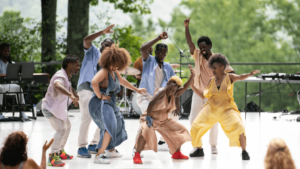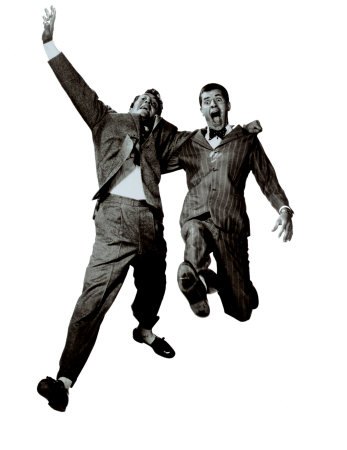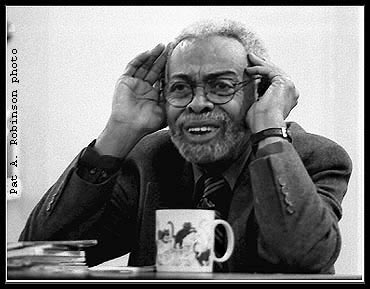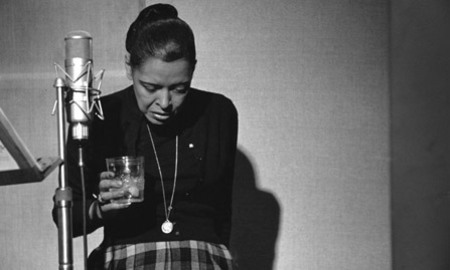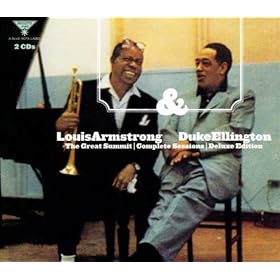I’m just doing some housekeeping over here in the blog (hence the somewhat dodgy CSS), and have been looking back through unpublished drafts. This is a post that I wrote back in July. I put off publishing it then because I was getting a bit more attention than I felt comfortable with. So I just put it on pause. It’s probably going to be read as controversial, but to my mind it’s really just standard critical engagement with a few texts. But the fact that I’m writing about people in my own community in a way that academics often don’t – ie with a real sense that my words have consequences and aren’t just ‘neutral’ observation – changes the way this will be read. And the way I think about writing this stuff.
So, I guess this is my unpacking and rummaging through a little cultural baggage. I’ve made plenty of apologetic explanations below, though it kind of shits me that I feel so little confidence in my own ideas. But, you know, this is a post about talking about important issues. Right now, in this moment when my government is taking such a shameful stance on refugees (fuck off, you’re not white, we don’t want you here), is continuing with the NT Intervention (fuck off, you’re not white, we don’t want you here) and generally being complete arseholes, I think it’s more important to take a few risks myself.
Structurally, this post begins with Lisa Wade’s article which discusses Sarah and Dax’s ESDC 2011 routine. I tie in (in a limited way), the Two Cousins video clip which starred Ryan Francois and Remy Kouakou Kouame.
Then I explain why I’m not entirely ok with Lisa’s use of ‘black’ and ‘white’ – I want a more critically nuanced approach, one which also looks at how class and gender work in ethnicity. I’m especially frustrated by her use of the concept of ‘tacit knowledge’ because it doesn’t prioritise or encourage activism (or speaking out about or engaging with racism). I suggest a more politicised approach helps. Then I suggest that all this makes more sense within cultural context: race and ethnicity in Australia, Britain and America; the way different film texts work within an historical industrial context; reading Sarah and Dax’s performance in relation to their broader online presence (ie their blog). That last bit is important because I tie their talk about bodies, beauty and gender into this performance’s portrayal of bodies, ‘fat’ and masculinity.
I started writing this comment over at Lisa Wade’s post ‘RACE, APPROPRIATION, & LINDY HOP: HOW TO HONOR OUR HEROES’, but I couldn’t really justify such a long comment on someone else’s post. I want to write and write about this, because I’ve spent so much time looking at cultural transmission in lindy hop, and the role digital media plays in this process. I’ve spent a long time thinking about this stuff, and I think I have some responses to Lisa’s question
How do white people, especially when they’re more or less on their racial own, honor art forms invented by oppressed racial groups without “stealing” them from those that invented them, misrepresenting them, or honoring them in ways that reproduce racism? You tell me… ’cause I’d like to know.
But it’s such a complex issue, and I’m not really sure I have the brains to work through it right now. I certainly want to return to my brief and fairly rubbish post about Slow Club’s Two Cousins clip, but I don’t really have room to think about that right now, either.
So why am I posting at all? I want to jot these ideas down. I want to participate (that is my greatest fault, I think – I hate the thought of missing out!) Also, I LOVE to talk and write. And this is my blog, so I can just ramble on as long as I like.
This is Lisa’s original post. I’m reproducing it here because posts disappear. Please note: I’m using Lisa’s first name rather than her last because that’s how we tend to address peeps in the dance world. I certainly don’t mean any disrespect.
RACE, APPROPRIATION, & LINDY HOP: HOW TO HONOR OUR HEROES
by Lisa Wade, 1 day ago [6 Jully 2011] at 10:00 am
Lindy hopper Jerry Almonte sent along a clip of the first place-winning routine in a division at the European Swing Dance Championships. Lindy hop is a partner dance invented by African American youth in Harlem dancing to swing music in the early 1930s. It’s near and dear to my heart; I’ve been a lindy hopper for 13 years (minus that year with a broken leg).
Modern day lindy hop raises difficult questions. In a post I wrote when the beloved Frankie Manning died, titled Race, Entertainment, and Historical Borrowing, I tried to capture the conundrum. I’m going to quote myself extensively, only because this is a tricky issue that deserves real discussion:
Though lindy hop was invented by African Americans, lindy hoppers today are primarily white. These contemporary dancers look to old movie clips of famous black dancers as inspiration. And this is where things get interesting: The old clips feature profoundly talented black dancers, but the context in which they are dancing is important. Professional black musicians, choreographers, and dancers had to make the same concessions that other black entertainers at the time made. That is, they were required to capitulate to white producers and directors who presented black people to white audiences. These movies portrayed black people in ways that white people were comfortable with: blacks were musical, entertaining, athletic (even animalistic), outrageous (even wild), not-so-smart, happy-go-lucky, etc.
So what we see in the old clips that contemporary lindy hoppers idolize is not a pure manifestation of lindy hop, but a manifestation of the dance infused by racism. While lindy hoppers today look at those old clips with nothing short of reverance, they are mostly naive to the fact that the dancing they are emulating was a product made to confirm white people’s beliefs about black people.
…
So we have a set of (mostly) white dancers who (mostly) naively and (always) wholeheartedly emulate a set of black dancers whose performances, now 70 to 80 years old, were produced for mostly white audiences and adjusted according to the racial ethos of the time. On the one hand, it’s neat that the dance is still alive; it’s wonderful to see it embodied, and with so much enthusiasm, so many years later. And certainly no ill will can be fairly attributed to today’s dancers. On the other hand, it’s troubling that the dance was appropriated then (for white audiences) and that it is that appropriation that lives on (for mostly white dancers). Then again, without those dancers, there would likely be no revival at all. And without those clips, however imperfect, the dance might have remained in obscurity, lost with the bodies of the original dancers.
It is this paradox that stirred Jerry to send along the clip of Dax Hock and Sarah Breck performing a routine that was an homage to a famous clip from the movie Day at the Races, featuring Whitey’s Lindy Hoppers. Here’s the original clip from 1937.
And here’s Dax and Sarah’s routine (Dax, btw, is in a fat suit; an entirely different and equally troublesome issue).
To be as clear as possible, I do believe 100% that Dax and Sarah have no intention to mock and, as essentially professional lindy hoppers, I doubt very much that they’ve never considered the ideas I’ve explained above.
Dax and Sarah are not my target here and, besides, they’re just two people. All conscious lindy hoppers struggle with these issues. My target, and my own personal struggle, is the entire endeavor.
I leave this as an open question for discussion, and one that extends far beyond lindy hop to jazz, blues, rap, and hip hop music; other forms of dance, like break dancing and pop and locking; and even the American obsession with spectating sports that are currently dominated by black athletes. It also extends far past the relationship between blacks and whites, as Adrienne Keene well illustrates in her blog, Native Appropriations.
How do white people, especially when they’re more or less on their racial own, honor art forms invented by oppressed racial groups without “stealing” them from those that invented them, misrepresenting them, or honoring them in ways that reproduce racism? You tell me… ’cause I’d like to know.
———————
For more, I’d be thrilled if you read my original post, inspired by the passing of Frankie Manning.
Also worth considering is this beautiful music video (Slow Club, Two Cousins) featuring lindy hoppers Ryan Francoise and Remy Kouakou Kouame performing vintage jazz movement. Is it different? What makes it so (other than production value and the race of the dancers)? Can you articulate it? Or is it tacit knowledge?
Inspired in part by The Spirit Moves?
I’m interested in Lisa’s points, but I think some of the key issues need a little expansion. I find some of her conclusions troubling. So I’m going to address them here in a disorganised, ad hoc way. Cool. Not.
Initially, I’m not comfortable with talking about race or ethnicity without also talking about class (and then gender and then sexuality). This becomes particularly important when you consider lindy hop in Japan or Korea or Singapore. The majority of dancers there are not white, but perhaps they are middle class? I think that it’s very, very important to interrogate class as an engagement with social and cultural power; it is not enough to end with skin colour as the defining marker of race or ethnicity.
In a related point, I also have some troubles with the way Lisa talks about ‘white people’ as though they were a homogenous group. I mean, setting aside class, sexuality and a heap of other issues, it’s been fairly stunning to me to see how simply having a group of women perform the Tranky Doo changes its meaning. So I think we need to be careful of using ‘white’ and ‘black’ as blanket terms, lumping masses of people together under single terms. ‘Black’ is especially interesting, as the word works in different ways in Australia, in America, in the UK, in Europe. And then within those countries the word is used in different ways by different groups and individuals.
And I have some concerns about approaching this discussion via the concept of ‘tacit knowledge’. Simply, I think there are other, more useful ways of talking about what’s going on in the clips. I’m with Katrina Hazzard Gordon and Stuart Hall and Paul Gilroy and bell hooks and Judith Butler… I think we need to engage with the ideology at work here in an actively politicised way. Because these performances aren’t ideologically neutral, nor are the effects of their actions neutral. We need to engage with these issues, we need to unpack the politics, interpersonal as well as institutional. To do otherwise would be to ignore the way these texts embody the wider discourses of the societies in which lindy hop scenes exist, how they function culturally and socially in the modern lindy hop world, and how they articulate power within lindy hop today.
As an example, Lisa suggests that we cannot articulate why a performance might be racist, but we have ‘tacit knowledge’ of what racism is. I find this approach a little lame. Racism does not exist in a black/white, on/off dichotomy. It works in complex ways and a particular text might be articulating racist ideas in a range of ways, might be read as racist because of how it frames or reproduces and supports racism through the relationship between textual elements, reception and then dissemination. I would suggest that not being able to articulate why something ‘feels’ racist should just be the starting point. Don’t stop here! Speaking up about racism is very important – do it!
If I find a particular routine or image discomforting, I don’t say ‘oh, it’s racist because I have a tacit knowledge of racism’. I start analysing the text, the way the text is framed, where I found it, what other texts were circulating at the same time. I start interrogating my own feelings and try to figure out what’s happening. The goal here is that we learn how to articulate our concerns, and then develop the confidence to articulate them. Tacit my arse. Let’s get fucking ACTIVE here!
After all, if we simply say ‘I think it’s racist but I can’t explain why’, how is this any more convincing an argument than ‘I don’t think it’s racist, and I don’t have to explain why’? You need to start expressing your ideas, and exploring your concerns so that you can then say to those ‘I don’t think it’s racist’ people: “I’m suspicious of the fact that we see so many scenes where black dancers are dressed as servants in films. So I reckon we should think twice before we recreate those scenes.”
Cultural context is important. It’s difficult to apply American critical tools for discussing race and cultural transmission to the UK or Europe (where Ryan Francoise and Remy Kouakou Kouame are based), for example. The black British migrant experience is also quite different to the American, and histories of slavery in Britain, America and Australia are quite different. I faced similar challenges discussing lindy hop in Australia, where our discursive engagement with race is quite different to the American example.
It’s very difficult to talk about black American dance in film in the 30s without also talking about slavery, blackface and minstrelsy and segregation in American history. It’s difficult enough addressing these issues in an American setting, but it’s even harder in an Australian context. Many Australians simply aren’t aware of this country’s slave history. A recent debate about the use of blackface on a tv program revealed not only most Australians’ unfamiliarity with blackface in Australia, but with the racial politics at work in blackface in an American context. Nor do many Australians really understand the long standing history of segregation in this country. They simply don’t know that black Australians couldn’t eat, drink, shop, swim or travel in the same spaces as white Australians. So when Australians watch sequences from films like the Day At The Races, with all its intonations of segregation, black face, slavery and so on, these themes don’t resonate in the same way as when an American watches. I guess, here, we also need to talk about audiences and reception as well as cultures of production (and institutions producing and disseminating media texts).
When we’re talking about dance clips, who is watching? Where are they watching? The Slow Club text is a music video. We are talking about Dax and Sarah’s showcase routine as an AV recording of a performance at a dance competition in Europe. I am a white, middle class woman living in a large, well-serviced, safe city in Australia watching these clips on my (reasonably ok) internet connection in my own home on my own computer. I am a dancer, but I am not a brilliant dancer. I am/was a media studies scholar who’s studied and published and taught film and media studies and who wrote a PhD on race/gender/identity in dance and digital media. All these things shape the way I read these texts. What I see will reflect who I am and what I am reading for. How I use these texts will reflect these things as well. I am also reading these texts in relation to each other, and in relation to a vast body of audio-visual recordings of dance. I’m accessing them online, and I’m reading them in relation to other online texts – Sarah and Dax’s blog, Faceplant, the Yehoodi discussion board, the Yehoodi Talk show, Lisa’s blog, etc etc etc. These texts don’t exist in isolation. They are part of and constitute a discourse on/about dance.
The Slow Club clip is interesting because it’s a British band featuring European dancers. The song exists in an international context, and is referencing American television performances by black American dancers. But these performances circulate today again in an international context, and are most familiar to middle class dancers in a number of countries.
I think we need to talk about masculinity as well. Luckily Paul Gilroy and Stuart Hall have done a lot of the heavy lifting for discussions about black British masculinity and identity.
While I’ve found the Slow Club clip quite exciting and interesting and posted a little bit about it already, the Dax and Sarah clip is a little more challenging. I cannot help but engage with this performance in reference to the things they’ve written about gender on their own blog. I wrote a couple of things in response to their posts myself: Women talking about their own bodies and how this issue was trolled or women dancers wearing high heels and talking about it (Saturday, March 26th, 2011) and Fuck that shit. I’m not wearing no fucking high heeled shoes (Tuesday, April 5th, 2011). I’m sure they are endorsing conventionally gendered notions of physical ‘beauty’. I’m not sure they’re actually engaging reflexively with the way their appearance (when that appearance includes gender and race and class and other identity markers) informs audiences’ readings of their dancing.
I don’t want to give the impression that I’m on some sort of anti Dax and Sarah vendetta. I’m not. It’s just that they keep/kept leaping into the public discourse with such enthusiasm. As I wrote in the ‘Women talking about their own bodies…’ post, I think that lindy hoppers need to think through their public personas, and to be aware of the fact that teachers and performers – ‘celebrity lindy hoppers’ – are going to attract a great deal of public scrutiny.
As I write this I’m thinking about my own experiences with public scrutiny. The recent attention to this blog has been difficult to adjust to. I’m not sure I like all this attention. I know I haven’t liked some of the unpleasant comments I’ve had to delete, and it’s definitely been strange being approached by strangers at dance events who feel they ‘know me’ or have a right to regale me with their opinions at 2am while I’m DJing. I haven’t liked that. But then, this is the internet. If I’d wanted to keep my ideas secret, I shouldn’t have posted them…
… wait a minute. Fuck that. It smells a little too much like ‘don’t wear a short skirt or walk about by yourself at night if you want to be safe’. Don’t we all deserve respect and safety, just BECAUSE?
Yes.
Which is why I want to repeat: Sarah and Dax are great dancers, I suppose they could also be great people (I wouldn’t know). But that doesn’t mean I don’t think there are some problems with the things they’ve said online and done in dance performances. I feel that we need to engage with the ideas behind and within dancing as well. That stuff isn’t ideologically neutral: dancing IS discourse. And when you put it out there, in a competition, you are inviting discussion. So I’m going to discuss.
Firstly, I certainly don’t think Dax or Sarah intended offence, and I’m almost certain they intended their dancing as homage. That routine also has to be read in reference to other recreations of iconic routines: in this setting, and by these dancers, this routine was almost certainly intended as a mark of respect and admiration for the ‘original lindy hoppers’. It is however, I’m fairly certain, not a critically reflexive performance of racialised identity. In other words, I don’t think Dax and Sarah thought this thing through. Which, really, isn’t that surprising if you read them as young white people who haven’t had to engage with the issues of race and power embodied in the Day At The Races film. When you are a member of an empowered group, you don’t need to think about these things. Because they enable what you do, rather than inhibit you.
The troubling part seems to be the ‘fat suit’ (and what a troubling term that is), and I would have liked to see Lisa place this in the foreground of her article, rather than setting it aside. It seems to me that the suit initiates connotations of ‘humour’, and that is where many of the difficulties with this routine lie. It is difficult to negotiate when and how the ‘joke’ begins in this routine. Fat people are funny? Black fat people are funny? White fat people are funny? I find all these ideas deeply offensive, but also indicative of both the dancers’ ideas about physical beauty (which they have both articulated at length on their blog) and of modern lindy hop’s ideas about ‘beautiful bodies’. Would the routine have prompted such debate if it had presented a more familiar example of male athleticism? If Dax had appeared in his usual muscled, fit, and conventionally attractive body?
I’m wondering if the fat suit works as a sort of ‘blackface’. It’s a performance of a particular type of masculinity which, while it isn’t physically ‘black’, is continually referencing the black bodies dancing in Day At The Races. The very point of that routine is that it requires audiences’ familiarity with that film. Race is there, even if it is ‘invisible’. And I must say, here, that whiteness is as much about race and ethnicity as blackness is. To make whiteness ‘neutral’ or unmarked by race is wrongtown.
But then, how are we supposed to respond to this routine? Are we supposed to ‘laugh at the fat guy’? I know that in most lindy hop culture the muscled, athletic body is valorised (you only need consider the popularity of P90X and Insanity for evidence). If we are supposed to ‘laugh at the fat guy’, is it possible to also admire and valorise this ‘fat body’ at the same time? The crux of the original Day At The Races clip lies in exactly this tension: the dancer’s ability to perform impressive acts of athleticism with his body. Additionally, ‘fatness’ and fleshliness carried different connotative values in 1930s black American culture. So Dax and Sarah bring a different understanding of ‘fat’ to that clip, and to their performances. And audiences watching Dax and Sarah perform are watching from another point in time and culture.
I think gender is important here. The ‘fat suit’ – the ‘fat guy’ – only works in reference to the other male bodies on screen, and most particularly, the female body on-screen and on-stage. Dax in the ‘fat suit’ only works when compared to Sarah’s presentation of highly conventional female ‘beauty’. While she is also in connotative ‘blackface’ (at that same distance Dax is – through reference to the film and in her costuming), she is also in ‘whiteface’, wearing an athletic, healthy, conventionally ‘female’ body. The joke requires the conventionally attractive white/black heterosexual woman as foil for the ‘laugh at the fat guy’ joke. Part of the joke is the implication that ‘the fat guy’ has to be a seriously badarse dancer to secure such an attractive partner, because she’d otherwise have no interest in him.
I suspect that this is where the real conflict lies. One of the most persistent taboos in lindy hop today is disrespecting dancers from the 30s or 40s. It makes us uncomfortable to negotiate the disrespect of ‘laughing at the fat guy’ when this ‘fat guy’ (Dax in costume) is meant to be one of the Whitey’s Lindy Hoppers. Not only is Dax appropriating a black performance (of awesome dancing) from a film produced in decidedly unjust social context, he is also capitalising on the joke. He is not going to be the butt of this joke – we know he is wearing ‘the fat suit’ – so he is ‘safe’. He’s ‘not actually fat’. He doesn’t need to physically experience what it is to be ‘fat’ in modern American culture. He takes no risks. But at the same time he can also claim credit for the dancing ability he demonstrates – it’s good dancing, he is a good dancer. This is also where their performance fails, really, to realise the goals of the original performance. The original dance scene was impressive because he was a ‘fat guy’ who danced well despite/with his body. We never forget that Dax is ‘wearing the fat suit’. He has nothing to ‘overcome’, here.
[I would to talk about a Yehoodi talk show interview (16 March 2011) where Dax talks about dancing with an injury on So You Think You Can Dance, and how this is different to ‘dancing fat’, but I don’t really have space or time or brainz to do it. Except to say that there’s something interesting to be written about dance, injuries, perceptions of injuries, pain and masculinity.]
There is the chance, though, that Dax and Sarah didn’t intend this reading. Perhaps they are working to present an alternative portrayal of white masculinity. The physically large, well-fleshed heterosexual man as desirable, desiring, powerful and admirable subject. Perhaps they are trying to say “Look – ‘fat’ is, after all, only an arbitrary evaluation of physical size articulating western consumer values and notions of ‘beauty’.” Perhaps they are trying to comment reflexively on bodies and embodiment in dance. Perhaps. I’m not convinced. The thing is, this clip is existing in the same discourse as their blog, where they have both repeatedly articulated conventionally heterosexist and patriarchal ideas about gender, sex and beauty.
They are not, unfortunately, fucking over the patriarchy here.
Where do I leave this discussion? With a loud sigh and a bit of head shaking, I’m afraid. I don’t really have a solid ‘solution’. I think it’s a really excellent thing that we are actually talking about this issue openly in lindy hop today. It’s something that’s bothered me as long as I’ve been dancing. I mean, there are some problematic things happening here as well. I’d be very surprised if Australian dancers actually participated in this online discussion about race and dance or engaged with it in their dancing.
[EDIT: wtf does Lisa mean by “white people more or less on their racial own”?! When the fuck are people ever on their ‘racial own’? And what does that even MEAN?]
